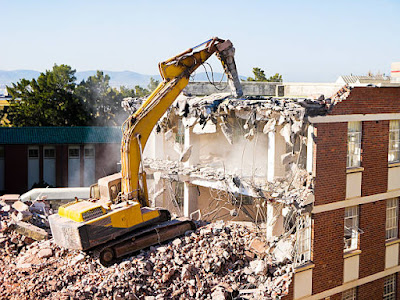A Guide to Navigating the World of Commercial Waste Disposal
Proper waste disposal is a critical aspect of running a successful business. Not only does it ensure compliance with environmental regulations, but it also reflects your commitment to sustainability and responsible business practices. Navigating the world of commercial waste disposal can be complex, but with the right knowledge and strategies, you can manage waste efficiently while minimizing its impact on the environment and your bottom line. In this guide, we'll walk you through the key steps and considerations for effective commercial waste disposal CA.
Understanding Your Waste
Before effectively managing your commercial waste, you must understand the types and quantities of waste your business generates. Start by conducting a waste audit, which involves:
- Categorizing Waste: Identify the various types of waste your business generates, such as paper, cardboard, plastics, hazardous materials, and organic waste.
- Quantifying Waste: Measure each waste stream's volume or weight to determine which are the most significant contributors.
- Assessing Composition: Analyze the composition of each waste stream to identify opportunities for recycling, reusing, or reducing waste. Understanding your waste profile is crucial because it helps you make informed decisions about disposal methods and cost-effective waste reduction strategies.
Compliance with Regulations
Compliance with waste disposal regulations is non-negotiable for businesses. Depending on your location and industry, you may be subject to specific waste disposal laws and regulations. Some key considerations include:
- Permits and Licenses: Ensure you have the necessary permits and licenses to handle and transport hazardous waste if applicable.
- Record-Keeping: Maintain accurate records of your waste disposal activities, including quantities, disposal methods, and the waste destination.
- Environmental Impact: Be mindful of the environmental impact of your waste disposal methods. Consider alternatives like waste-to-energy or environmentally friendly disposal techniques.
Waste Disposal Methods
Selecting the appropriate waste disposal method is essential for both environmental responsibility and cost efficiency. Common disposal methods for commercial waste include:
- Landfill: This is often the least environmentally friendly option. It should be used as a last resort for non-recyclable and non-hazardous waste.
- Incineration: Waste-to-energy incineration can be an option for certain types of waste, but it should also be approached with caution due to emissions concerns.
- Recycling: Prioritize recycling for paper, cardboard, glass, and plastics. Materials can be sold to recycling facilities, potentially generating revenue.
- Composting: If your business generates organic waste, consider composting as a sustainable disposal option.
- Hazardous Waste Disposal: If your business generates hazardous waste, work with specialized disposal companies that can handle these materials safely and in compliance with regulations.
Conclusion
Navigating the world of commercial garbage disposal CA may seem daunting, but with the right strategies and a commitment to sustainability, you can effectively manage waste while reducing its environmental impact.




Comments
Post a Comment